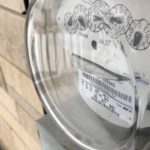Larger homes would be net-zero energy under new bill – Maui News
Energy Disrupter
A 6,492-square-foot oceanfront estate in South Maui with five bedrooms and seven bathrooms is shown. A Maui County Council committee is considering a bill that would require new one- or two-family residential buildings over 5,000 square feet be zero net energy homes. The home is currently on the market for $38 million. Photos courtesy of Coldwell Banker Island Properties
Knowing that housing development and construction operations are among the biggest contributors to climate change, Maui County officials are proposing to require that new one- or two-family residential buildings over 5,000 square feet be zero net energy homes.
The county, along with experts in the field, has been “trying to combat climate change” through ideas like amending building codes, said Maui County Council Member Kelly King, chairwoman of the Climate Action, Resilience and Environment Committee that discussed the proposed bill on Tuesday.
Although no vote was taken, King said that meetings will “give us an idea of how we want to move forward — if we want to tighten up the legislation, if we’re good with the legislation with the way it is, but there is more education that needs to be done among the developing communities and hopefully this discussion will help us get there.”
All four testifiers were in support of the bill, including Kihei Community Association President Mike Moran, who said development on Maui seems inevitable.
“We struggle to stop or at least slow down these large unaffordables, so if we are going to get them, at least try to make them somewhat sustainable and cooperate with our natural environment as much as we possibly can,” Moran said.

The exterior of a $38 million, 6,492-square-foot home at 3090 S. Kihei Road on Keawakapu Beach is pictured. County officials are considering requiring new one- or two-family residential buildings over 5,000 square feet be zero net energy homes.
Rita Ryan, who testified on behalf of 350Hawaii.org and the Climate Reality Project, said that the bill “makes perfect sense” for any size of home.
“Affordable housing should be zero energy because the cost of maintenance is so dramatically reduced, that it’s really an affordable option, so it’s not an unaffordable option that only can be afforded by wealthy people building mega-mansions,” Ryan said. “Over time, a net-zero home is going to cost the owner less money and it certainly is going to cost the environment a lot less trouble.”
Chief Sustainability Officer of 3-P Consulting Mark Deakos said Tuesday that a report from the Intergovernmental Panel on Climate Change last week shows that “if we continue with current emissions, globally, we have five and a half years before we many not be able to remain under the 1.5-degree Celsius increase in temperatures, which can have catastrophic consequences.”
The U.S. is the second-largest contributor of emissions at 11 percent behind China (27 percent). Deakos said that the “built-in environment” and building industry is responsible for about 67 percent of all greenhouse gases.
However, the good news is “the future has not been written,” he said. Building affordable “green buildings,” or homes that are energy efficient and environmentally friendly with low-impact designs, is a step in the right direction.
Net-zero energy is a concept describing a structure or home that consumes no more energy than it produces over a single year, explained Chief Building Official/Deputy Director Ron Flax of the Community Planning & Permitting in Boulder County, Colorado.
Although Colorado’s climate and cost of materials are much different than Hawaii, Flax said that “it’s been very successful” in having homes meet net-zero standards. Initially, much effort was put into community outreach, education and partnerships to make sure that the whole industry was on the same page. There was very little pushback, he said.
“Most of the things we’ve been talking about, to build an energy-efficient home, are actually not particularly expensive or difficult once you understand them,” he said. “All that learning needs to take place. It does take a little bit of time right off the bat, so we did give the community a chance to get climatized to that.”
Maui County Energy Commissioner Alex de Roode said that the proposed zero net energy bill “allows us to get our feet wet and allow the industry locally to adapt as well.”
The verification process and monitoring compliance still needs to be worked out, he added, as well as whether additional county staffing or training is necessary.
Energy auditor Austin Van Heusen, a representative from Green Building Hawaii, said that South Maui already has a few net-zero energy model homes.
“However, there are few complications to that, but it is definitely possible,” Van Heusen said.
He added that implementing the new policy will not be an overnight success for contractors and developers, and there may be a “significant amount of pushback” during the transition, but “if done correctly, I think it will be a very successful program.”
One of the challenges with modeling homes that are net-zero energy is that there are many different climate zones in Hawaii. Maui, in particular, bases its modeling software off the temperature systems at the Kahului Airport, which is not an accurate representation for areas in Kula, for example.
Although Van Heusen believes this proposed bill to be “a great measure,” these challenges are “something to take into consideration.”
Other aspects to consider with large residential homes is that oftentimes they have accessory energy uses like pools or hot tubs, which are not included in general energy use and operations.
Sometimes the model of the home does not accurately reflect the actual operational use of the home. For example, if a tenant decides to run the air conditioning more often and at lower temperatures, then the energy use is going to be significantly higher than anticipated on the model, Van Heusen explained.
County Public Works Director Rowena Dagdag-Andaya said that the department is ready to “support any efforts” proposed in the bill. Financially investing in green energy construction will pay off in the long run in ways such as a reduction in energy bills.
Dagdag-Andaya also wondered whether or not the 5,000 square feet will include decks, lanai or a garage.
She suggested that the bill provide more clarity as to what the purpose of the ordinance is and that the committee get additional feedback from the construction industry, public works and Hawaiian Electric Co.
King deferred the bill for another discussion at a later date.
“Discussion is really important to know all the externalities that will affect this and what possible concerns there will be,” she said.
* Dakota Grossman can be reached at dgrossman@mauinews.com.
- A 6,492-square-foot oceanfront estate in South Maui with five bedrooms and seven bathrooms is shown. A Maui County Council committee is considering a bill that would require new one- or two-family residential buildings over 5,000 square feet be zero net energy homes. The home is currently on the market for $38 million. Photos courtesy of Coldwell Banker Island Properties
- The exterior of a $38 million, 6,492-square-foot home at 3090 S. Kihei Road on Keawakapu Beach is pictured. County officials are considering requiring new one- or two-family residential buildings over 5,000 square feet be zero net energy homes.
Original Source: https://www.mauinews.com/news/local-news/2021/08/larger-homes-would-be-net-zero-energy-under-new-bill/
















